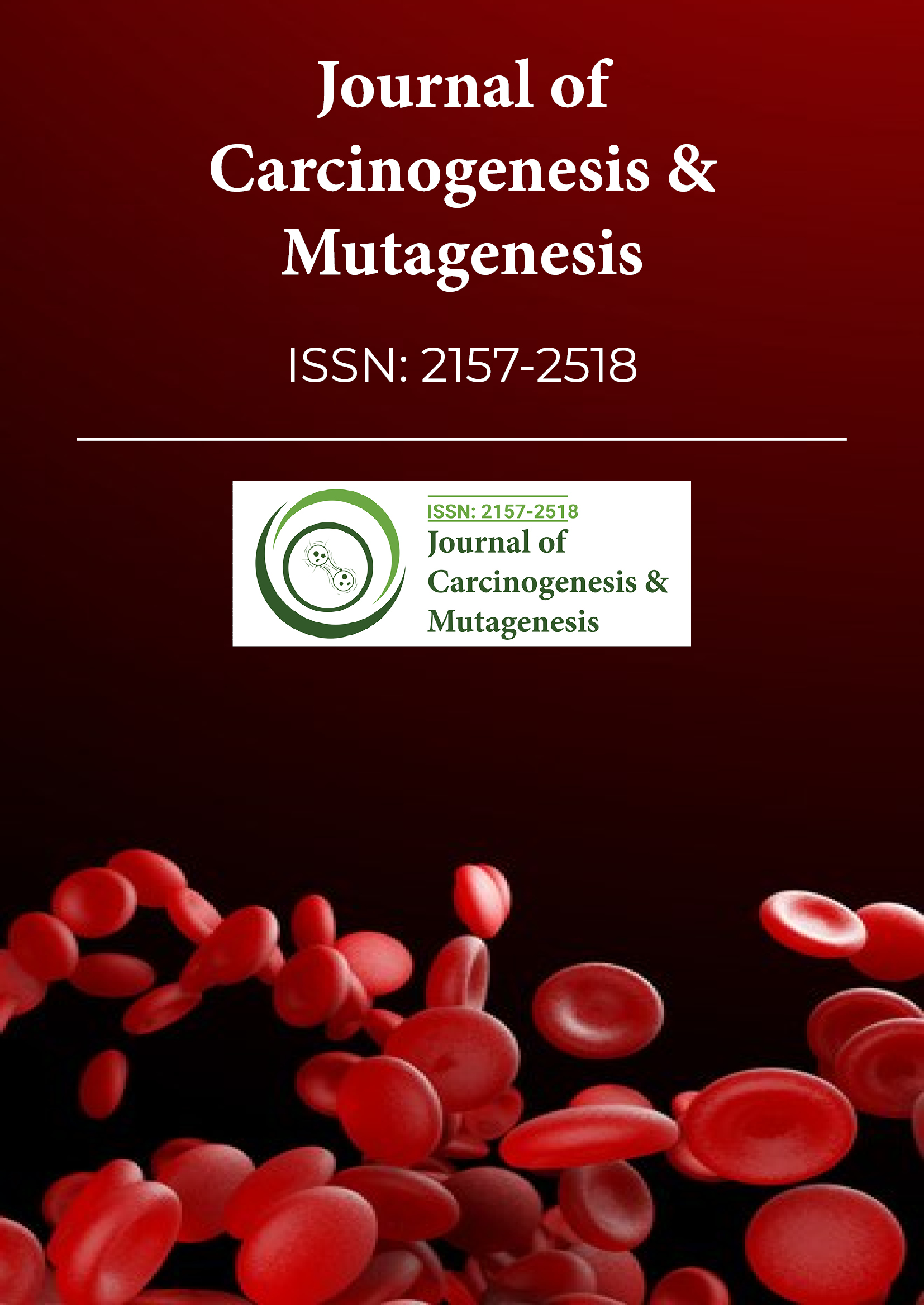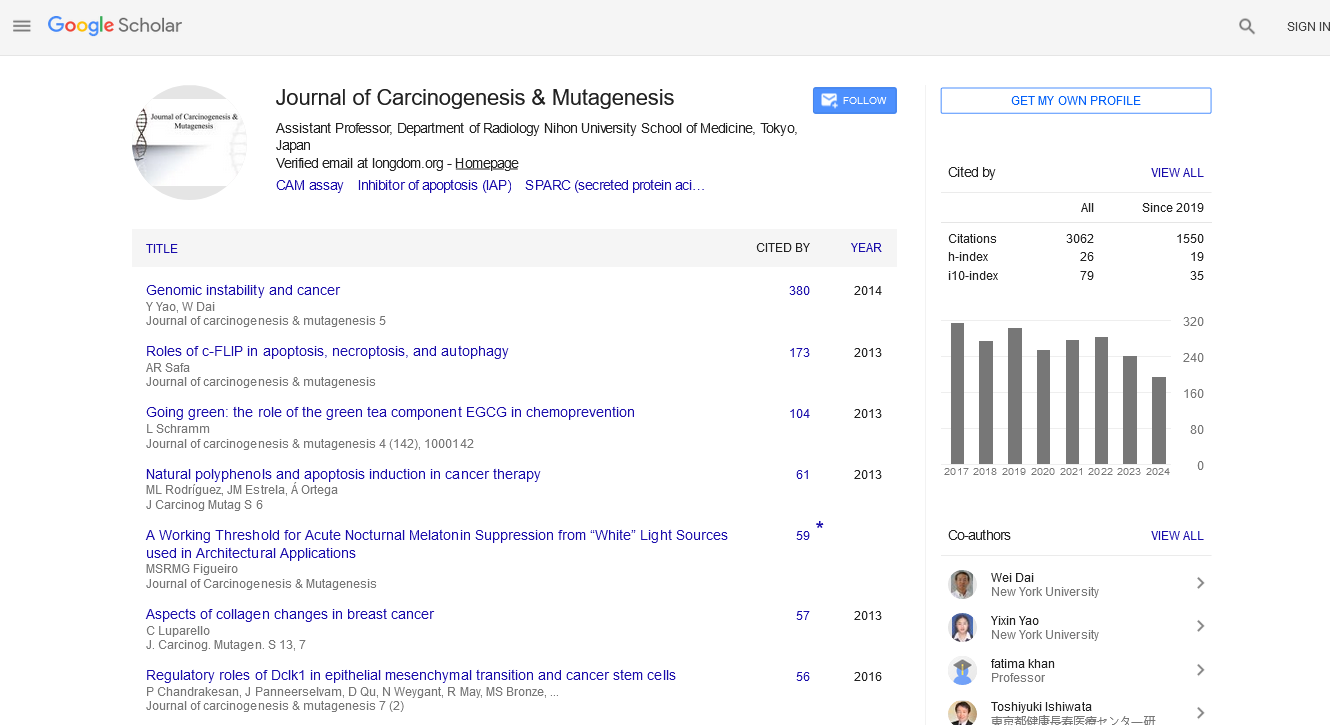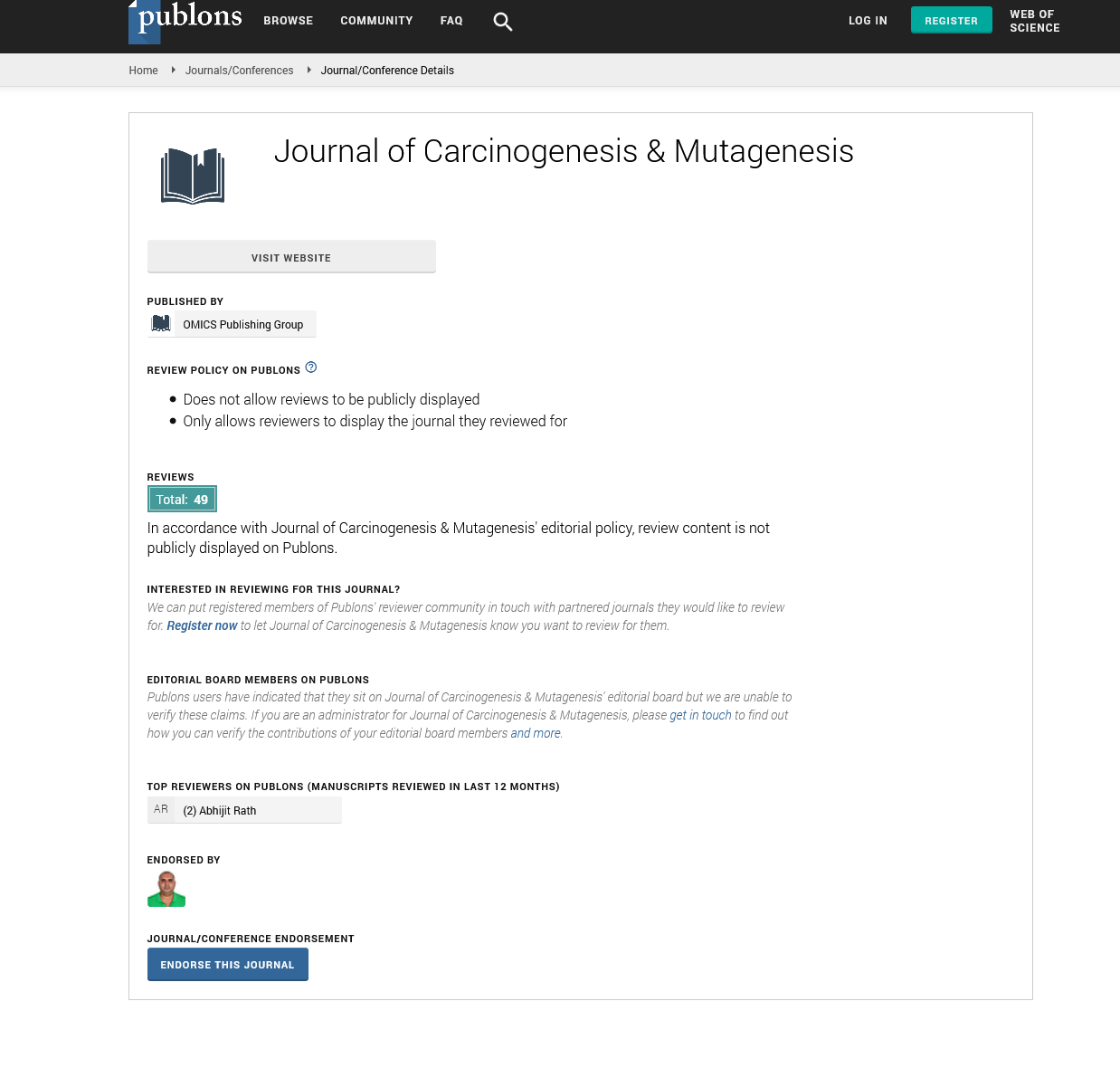Indexed In
- Open J Gate
- Genamics JournalSeek
- JournalTOCs
- Ulrich's Periodicals Directory
- RefSeek
- Hamdard University
- EBSCO A-Z
- OCLC- WorldCat
- Publons
- Geneva Foundation for Medical Education and Research
- Euro Pub
- Google Scholar
Useful Links
Share This Page
Journal Flyer

Open Access Journals
- Agri and Aquaculture
- Biochemistry
- Bioinformatics & Systems Biology
- Business & Management
- Chemistry
- Clinical Sciences
- Engineering
- Food & Nutrition
- General Science
- Genetics & Molecular Biology
- Immunology & Microbiology
- Medical Sciences
- Neuroscience & Psychology
- Nursing & Health Care
- Pharmaceutical Sciences
Commentary - (2022) Volume 0, Issue 0
Short Note on Lung Cancer
Jie Seow*Received: 02-Feb-2022, Manuscript No. JCM-22-15503; Editor assigned: 04-Feb-2022, Pre QC No. JCM-22-15503(PQ); Reviewed: 18-Feb-2022, QC No. JCM-22-15503; Revised: 22-Feb-2022, Manuscript No. JCM-22-15503(R); Published: 28-Feb-2022, DOI: 10.35248/2157-2518.22.S30.005
Description
Because of its clinical and biologic characteristics, small cell lung cancer (SCLC), formerly known as oat cell carcinoma, is distinguished from other lung cancers, which are referred to as non-small cell lung cancers (NSCLCs). SCLC is a neuroendocrine carcinoma with aggressive behaviour, rapid growth, early spread to distant sites, exceptional sensitivity to chemotherapy and radiation, and a high prevalence of paraneoplastic syndromes such as hypercalcemia, Eaton-Lambert syndrome, syndrome of inappropriate antidiuretic hormone (SIADH) secretion, and others.
When a patient has SCLC, it’s crucial to figure out whether the disease is at a limited or advanced stage. Chemotherapy and radiation are used to treat limited-stage cancer, which is possibly curable, with surgical resection reserved for select patients with stage I disease. Systemic chemotherapy is used to improve quality of life and prolong survival in advanced-stage cancer, which is incurable.
Small Cell Lung Cancer: Beating the Metastasis is a presentation created by Critical Images to help identify the important clinical and biologic aspects of small cell lung cancer, staging criteria, and common locations of spread.
Lung Cancer Clinical Presentations: Slideshow and Lung Cancer Staging — Additional information on SCLC staging and treatment can be found in the Radiologic Options presentations.
NSCLC (non–small cell lung cancer) accounts for over 85% of all lung cancers. NSCLC is classified histologically into three types: adenocarcinoma, squamous cell carcinoma (SCC) (see image below), and giant cell carcinoma. Patients with NSCLC should get a comprehensive staging workup to determine the degree of their disease, as stage influences therapy options.
For more information on this subject, go to Small Cell Lung Cancer. Expert comments on NSCLC treatment decisions and related guidelines can be found at Oncology.
Signs and Symptoms
NSCLC is a sneaky disease that often goes unnoticed until it’s too late. Early detection of symptoms may help to improve the prognosis.
At the time of diagnosis, 20% of patients have localised illness, 25% of patients have regional metastases, and 55% of patients have distant spread of disease. The symptoms of cancer vary depending on where it is found.
The following are the most prevalent signs and symptoms of lung cancer:
• Cough
• Pain in the chest
• Wheezing Shortness of breath Coughing up blood
• Hoarseness
• Infections that recur, such as bronchitis and pneumonia
• Loss of appetite and weight loss
• Fatigue
The following are examples of metastatic signs and symptoms:
• Bone ache
• Impingement of the spinal cord
• Headaches, limb weakness or numbness, dizziness, and seizures are all examples of neurologic issues.
• For further information, see the Presentation.
• Diagnosis
• Testing
After physical examination and CBC, chest x-ray is often the first test performed. Chest radiographs may show the following:
• Pulmonary nodule, mass, or infiltrate
• Mediastinal widening
• Atelectasis
• Hilar enlargement
• Pleural effusion
There are several methods of confirming diagnosis, with the choice determined partly by lesion location. These methods include the following:
• Bronchoscopy
• Sputum cytology
• Mediastinoscopy
• Thoracentesis
• Thoracoscopy
• Transthoracic needle biopsy (CT- or fluoroscopy-guided)
The standard for staging lung cancer is a chest CT scan. Except for small-cell lung cancer, all lung carcinomas are staged using the TNM (tumor-node-metastasis) staging approach developed by the American Joint Committee on Cancer Staging and End Results Reporting.
The TNM takes into account the following key pieces of information:
• T describes the size of the primary tumor
• N describes the spread of cancer to regional lymph nodes
• M indicates whether the cancer has metastasized
Primary tumor (T) involvement is as follows:
• Tx - Primary tumor cannot be assessed
• T0 - No evidence of tumor
• Tis - Carcinoma in situ
• T1, T2, T3, T4: size and/or extension of the primary tumor
Lymph node (N) involvement is as follows:
• Nx - Regional nodes cannot be assessed
• N0 - No regional node metastasis
• N1 - Metastasis in ipsilateral peribronchial and/or ipsilateral hilar nodes and intrapulmonary nodes, including involvement by direct extension
• N2 - Metastasis in ipsilateral mediastinal and/or subcarinal node
• N3 - Metastasis in contralateral mediastinal, contralateral hilar, ipsilateral or contralateral scalene node, or supraclavicular node
Metastatic (M) involvement is as follows:
• M0 - No metastasis
• M1 - Distant metastasis
• Positive pleural effusion is stage 4
Citation: Seow J (2022) Short Note on Lung Cancer. J Carcinog Mutagen.S30:005.
Copyright: © 2022 Seow J. This is an open-access article distributed under the terms of the Creative Commons Attribution License, which permits unrestricted use, distribution, and reproduction in any medium, provided the original author and source are credited.


